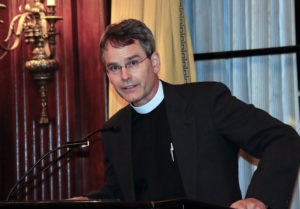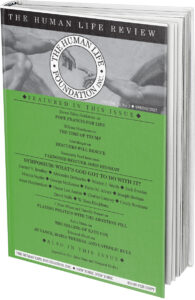When Wisdom Serves Evil
Now the serpent was more crafty than any other beast of the field that the LORD God had made (Genesis 3:1).
Before proceeding with this short reflection, let me acknowledge that those who perpetrate evil do not always intend to do so. It is possible to be deceived, and therefore it is possible for us to do evil while believing we do good. Moral decisions are always tied to a vision of “the good,” but sometimes we fail to see clearly. Therefore, Jesus’ words from the cross, “Father, forgive them, for they know not what they are doing,” are worth remembering.
And then, of course, sometimes those who perpetrate evil know exactly what they are doing.
The word translated as “crafty” in the verse above is the Hebrew word for wisdom—the same one used for wisdom in Proverbs, for instance. So the verse could be translated, “The serpent was wiser than any other beast the LORD God had made.” It is meant to alert the reader that the serpent, in tempting Adam and Eve to eat of the tree, knew exactly what he wanted to accomplish, and how to deftly go about doing it.
In Abuse of Discretion: The Inside Story of Roe v. Wade, Clarke Forsythe exposes much of the legal underbelly of Roe, with particular attention to the papers of the Supreme Court justices who decided the case. His account of judicial manipulation immediately prior to Roe particularly caught my attention.
Eisenstadt v. Baird was a case concerning contraception that the Supreme Court decided during the same time it was considering Roe. In his Eisenstadt opinion, a draft of which was released just before the initial oral arguments for Roe, Justice William Brennan wrote
If the right of privacy means anything, it is the right of the individual, married or single, to be free from unwarranted governmental intrusion into matters so fundamentally affecting a person as the decision whether to bear or beget a child.
Forsythe notes first that Brennan doesn’t bother to argue his point; he simply asserts it. Second, Eisenstadt wasn’t based on privacy, but rather on the Equal Protection Clause of the 14th Amendment, which in effect meant that Brennan’s comment was superfluous to the actual case, suggesting he made it for another reason.
That other reason becomes apparent in Brennan’s assertion of the right of an individual to decide whether “to bear or beget” a child. Contraception, of course, has to do with begetting a child. Bearing an already-begotten child, however, is another matter, and, while related, is technically outside the purview of contraception. Why then include the language “to bear”?
Brennan effectively suggested a right of privacy and connected abortion to it, thereby seeding Eisenstadt with an argument and language that could be used in the coming months to justify abortion in Roe. Lest we think this was simply sloppy judicial writing, Brennan, in a memorandum to Justice William Douglas, told his colleague that his Eisenstadt opinion would be useful in deciding Roe.
And so it was, the phrase “bear and beget” being picked up in popular media and marshalled immediately in abortion cases, including Roe. Brennan had effectively eased the way for Roe, establishing a legal precedent by planting the reasoning for abortion in Eisenstadt.
The serpent was no dummy—he knew exactly what he was doing. He knew who to approach, what to say, and how to say it in order to tempt Adam and Eve to eat the fruit. He believed that he could deceive Eve, and that Adam, who was with her, would be too weak to step in and prevent it. They ate, and the human race has suffered ever since.
Forsythe’s book can be found here.










